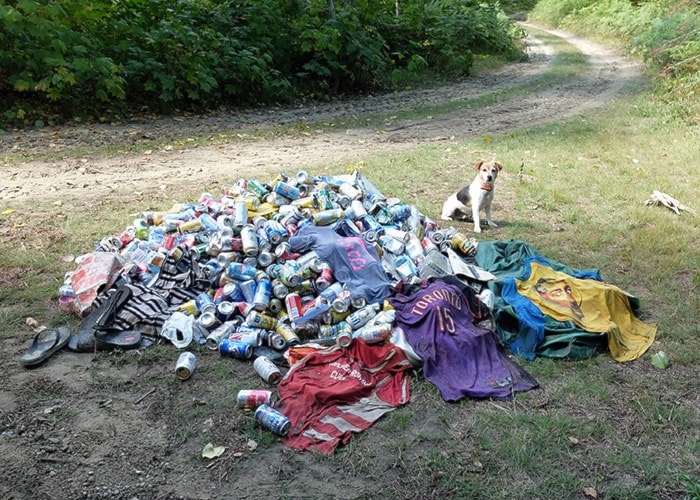Two weeks ago I floated down the Slocan River in a $20 Walmart floatie with my friend Leesa Dean. It was her maiden voyage on the Passmore to Crescent Valley stretch of the waterway, and together we spent four hours lazily swirl-whirling in the August heat. The pair of us ended up with matching lobster pink sunburns.
Partway down the river we beached ourselves on a white sand stretch next to a wide, calm swimming hole and I laid out my sopping towel next to an army of inukshuks, cairns and rock-pilings six inches high. It’s an idyllic spot, out of sight of the highway, surrounded by thick-packed trees and lush Kootenay foliage. Perry Ridge looms majestic nearby.
On previous outings I’d seen the place shoulder-packed with bros in board shorts and bikini-clad party girls, but on this particular occasion there was only a pair of men and a trio of playful dogs that charged in and out of the water joy-barking. We spent twenty minutes enjoying the way time congeals on the river, listening to the calming burble of it flowing past.
A little while later I was clambering back into my boat, preparing to shove back off into the current, when one of the men recognized me. He was standing in the shallows, chucking muddy bottles up on to the beach, and he asked me if we’d met before.
“I work for the newspaper,” I told him.
“Well, if you work for the newspaper, then I’ve got something to show you.”
I was curious enough to follow this man barefoot a few hundred metres into the woods, his Jack Russell terrier Humphrey bush-whacking his way alongside us, and eventually we came into a clearing where the man had piled river-retrieved empties on to a tarp with a slimy collection of old flip flops, abandoned T-shirts and filthy beer coolers.
“This is the worst I’ve ever seen it,” he told me.
As it turns out, this snorkeler—who wishes to remain anonymous—has been cleaning up this particular swimming hole for the last 15 years. The things he’s found beneath the surface, he told me, would shock most people.
“On a low water day you can see all the flashing cans. It bothered me. I grew up just a mile south of here, so I’ve been on the river my whole life. It used to be the river was deserted, just a few kids floating in old inner tubes, but in the last decade or so the river’s become alive with people on it every day, and lots of them.”
And that’s had some unexpected consequences.
“There never used to be leeches in this river. As a kid I never had a leech, and I was in the river every day of the summer. What happens now, though, is these cans go down to the bottom, stick in the eddies, and the leeches crawl inside where the fish can’t get them. There’s a number of mud suckers down there that normally go after leeches, but now they can breed in safety.”
Now, he told me, he surfaces with leeches suctioned on to his hands. One time he came up with an entire family of leeches all over his body, leading him to believe he’d disturbed the mother mid-birth.
“I find a lot of disagreeable stuff down there. In my pile I’ve got a diaper—and it’s not a clean one. I find tampons, half a dozen a year. I find cameras, wallets, sunglasses, hats, shirts.”
But there’s one particular thing that haunts him.
“There’s a place up river that decapitates chickens and throws the heads in the river. Several times I’ve been snorkelling and I’ll see these chicken heads staring up at me in a little clump.”
It was this point in the man’s testimony that Leesa made an appropriately effusive display of her disgust at the mental image, and I found myself picturing the wrinkled little spheres current-bobbing with their eye sockets gaping wide.
“I’ve never seen anything like it,” he said.
At the time of our original conversation I didn’t have any sort of recording device or camera, so I asked the snorkeler to send me some shots of his river haul and promised to let people know about what he’d told me. (I also felt guilty because on an earlier trip I’d lost a pair of flip flops.) When I called him from my office, I asked him to wax philosophical on his situation.
“I want more people to know what’s going on at the bottom of the river. You think of the Slocan as being beautiful, pristine, but what’s going down on the bottom is shocking and disturbing.”
And though he’s done a thorough job cleaning up his spot, he’s pretty sure nobody else along the river has taken it up themselves to tackle the remainder of the floating route. That doesn’t mean, however, that he wants the government to spend any money tackling the maintenance—as is done at the Cowichan River on Vancouver Island—because he thinks people should be taking responsibility for their own mess.
“There’s probably thousands and thousands of bottles and cans all up and down the river. It would be nice if someone went and cleaned it up, but people are quite capable of holding beer cans themselves and taking them home in mesh bags. We shouldn’t be polluting the river and asking someone else to clean up after us.”
Eventually I said goodbye to the snorkeler, belly-flopped back into my boat and finished my afternoon with Leesa. And though I spent plenty of time admiring our picturesque surroundings, my feet dangling in the frigid water as my sunburn pinkened, I also found myself trying to look past the sun-glinting current dance to whatever lurked beneath the surface.
